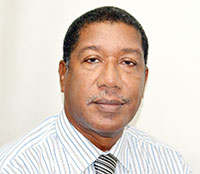IT is well known that a person’s dental health is primarily decided during the pre-school period of that person’s life, with the role played by the parent or guardian being an essential factor. But while tooth decay and gum disease are the principal agents that decimate an individual’s oral health, traumatic injuries are an important part of this, especially in children.
A recent study of injuries to primary teeth (the first set of teeth) showed children two to four years of age with the highest incidence. Falling against an object has been described as the most common cause of dental injury, and the most common type of injury to primary dentition is displacement. Other studies have shown soft tissue injuries and enamel dentine fractures to be the most prevalent.
Clinical evaluation of the injured preschool child can be difficult because the dentist is often dealing with distraught parents and a frightened and uncooperative child at the most inconvenient times of the day or even night.
Crown fractures of primary teeth involving enamel only are usually restored or filled. All that is needed is a slight recontouring of the biting edge to improve aesthetics. However, the involvement of dentine in the crown fracture necessitates restoration to seal the exposed dentinal tubules that contain nerve endings.
Because of short roots, primary teeth root fractures are unusual. The location of a root fracture in a primary tooth usually determines the outcome. Only when the X-rays show that the tip is broken should the tooth be treated. When the fracture is closer to the crown, the tooth is usually very shaky and has to be extracted.
Sometimes a child may suffer a blow to a tooth without it being displaced from its normal position. The structures supporting it would be injured. This condition is sometimes called a concussion. The tooth is usually tender to biting pressure and may be shaking, with bleeding occurring around the crown.
No treatment is indicated other than the slight filing of the chewing surface if the child complains of biting sensitivity. Mobile teeth generally tighten up on their own after a few weeks. The parent should be instructed to give the child a soft diet and a progress back to normal foods according to the child’s tolerance. The future for concussed teeth is good.
Displacement occurs more frequently than the crown or root fracture because of the resiliency of the alveolar bone and the short roots. These injuries may be extrusive (the tooth being knocked straight outward), lateral or intrusive (driven deeper into the jaw bone). In most cases these displaced teeth have to be removed. The dentist analyses the clinical picture before deciding to extract the displaced tooth.
Trauma to temporary teeth can cause psychological affliction to the child, unlike an adult. If these teeth require more than six months to be replaced by the underlying permanent ones, special effort should be made to preserve them in the dental arch. Failure to do so could result in crowding (riders) and malocclusion (abnormal bite) unless a space retainer (a type of denture) is fabricated for the child. Parents should seek professional advice on extraction or any other proper recourse so that any hasty action would not be regretted.



.jpg)








